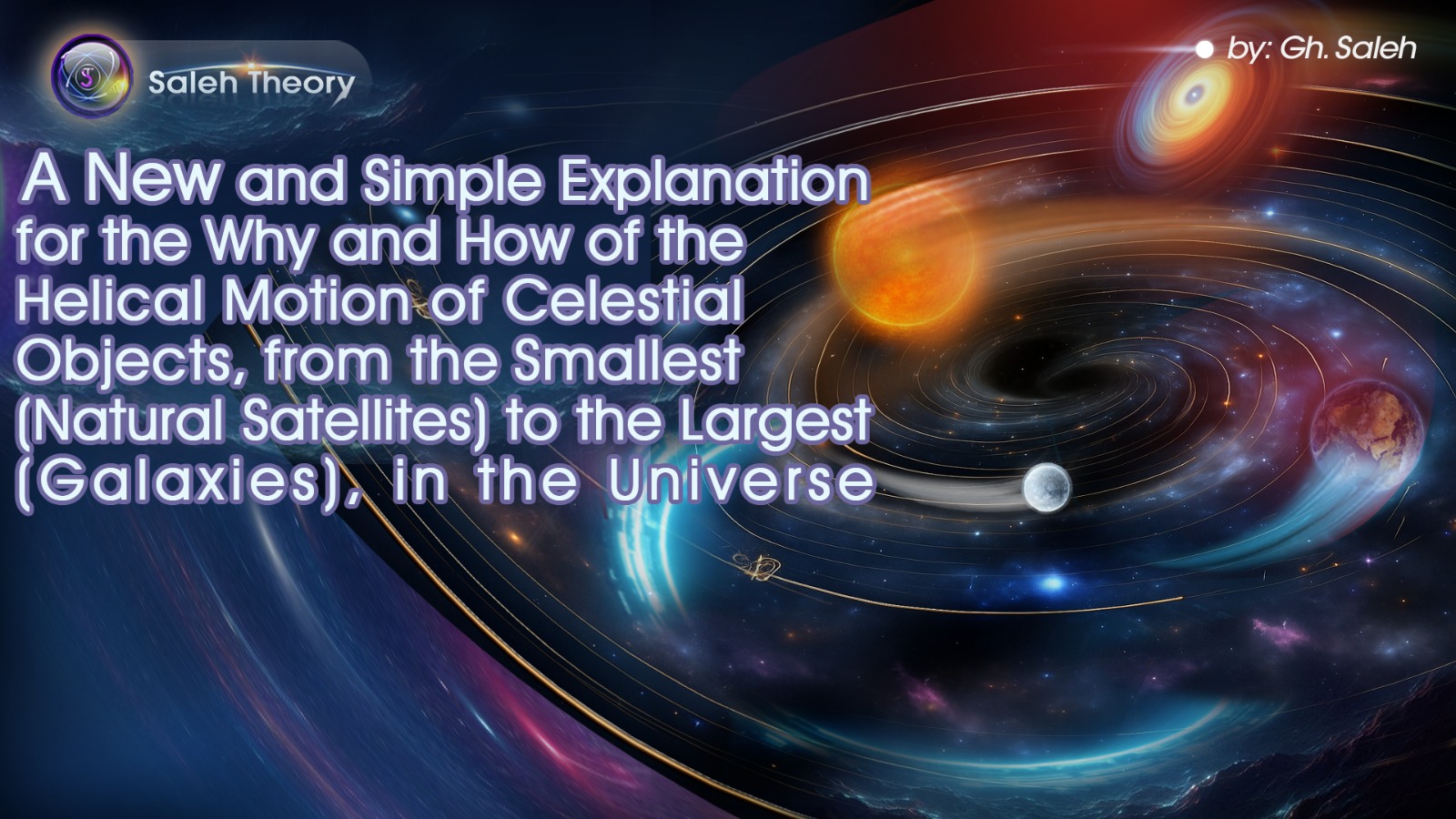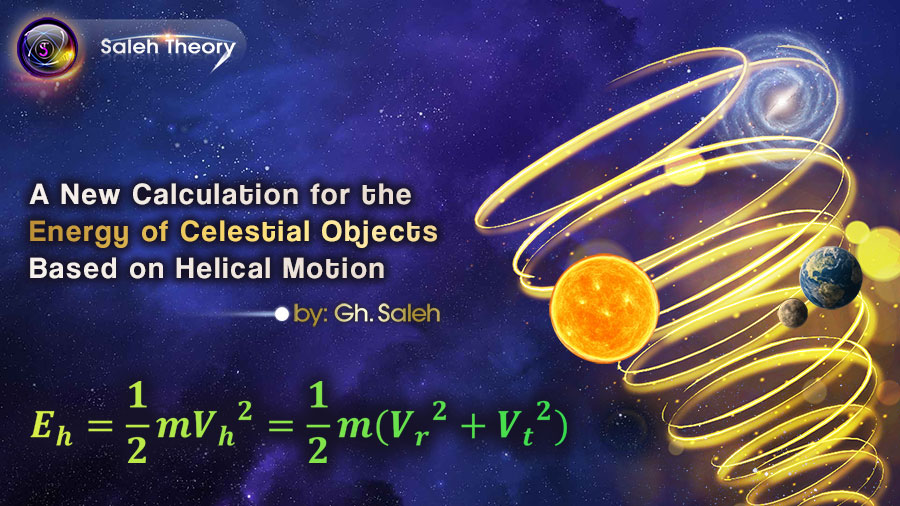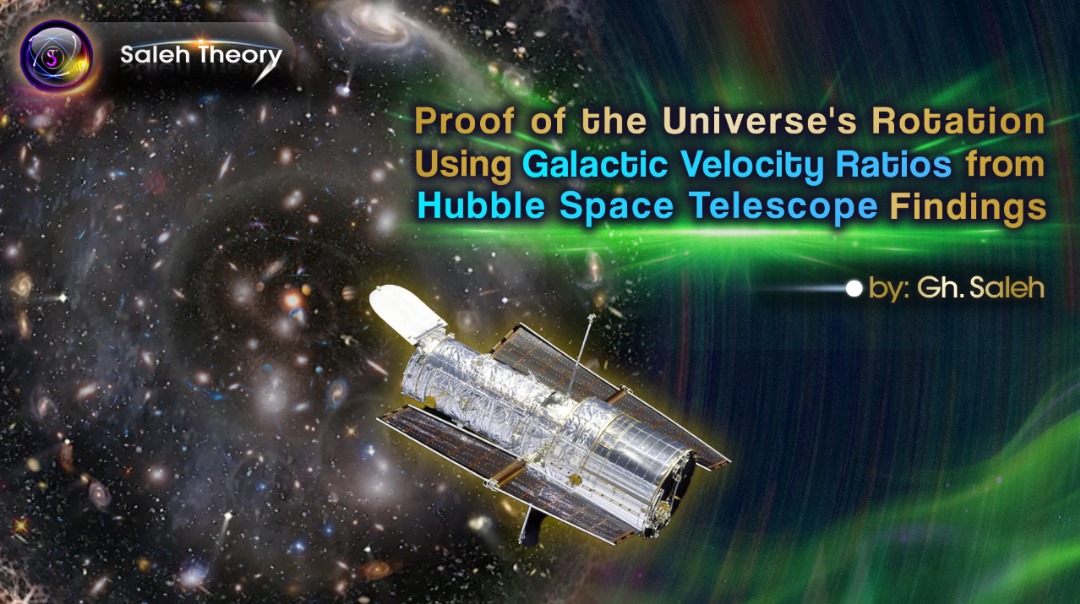
A New and Simple Explanation for the Why and How of the Helical Motion of Celestial Objects, from the Smallest (Natural Satellites) to the Largest (Galaxies), in the Universe
Considering the Moon, which is visible in the sky every night, we find that the Moon constantly revolves around the Earth, and the Earth also orbits the Sun. In fact, from the perspective of an Earth observer, the Moon traces a closed, curved path around the Earth. However, simultaneously, as the Earth moves around the Sun, the Moon is also displaced in space due to the gravitational force.
In other words, from the perspective of an observer viewing the simultaneous motion of the Moon and the Earth in space, the combination of the Moon's circular motion around the Earth with the Earth's linear (translational) motion around the Sun results in a helical path for the Moon. If we visualise this motion, it's like pulling a spring from one end, and its uncoiled shape reveals the spiral or helical path.
Now, if we consider the Milky Way galaxy, we know that the Moon orbits the Earth, the Earth orbits the Sun, and the Sun orbits the central black hole of the Milky Way galaxy. In this case, the Earth has two paths of motion:
1. Rotational path around the Sun
2. Sun's path around the central black hole
Therefore, the overall motion of the Earth can be considered helical. Analogously, the Moon, which follows three orbital paths (Moon-Earth, Moon-Sun, and Moon-Central Black Hole), can be described as undergoing two compound helical trajectories.
Likewise, if we consider the Milky Way galaxy as a member of a galaxy cluster, then rotational motion within the cluster also arises. And if the cluster is part of a supercluster, our galaxy will have yet another path on a larger scale. Consequently, the Milky Way galaxy has helical motion within the cluster and supercluster, similar to the image taken by the Hubble telescope, which has photographed a spiral path for a specific galaxy in space.
Conclusion:
Whenever a celestial object moves around the centre of its system or galaxy, the corresponding helical trajectories can be determined based on the number of its orbital paths. This rule applies at both small scales (e.g., natural satellites) and large scales (e.g., galaxies).
The simple relation for this can be demonstrated as:
{Number of helical paths } = n - 1
where n is the number of orbital paths of the object.
References:
[1] Gutzwiller, Martin C. "Moon-Earth-Sun: The oldest three-body problem." Reviews of Modern Physics 70.2 (1998): 589.
[2] Kryukov, N., and E. Oks. "Conic-helical motion in the three-body problem: Star-planet-moon systems and relativistic effects in binary-star-planet Systems." J Astrophys Aerospace Technol 5.144 (2017): 2.
[3] Couprie, Dirk L. "The Spiral Movement of the Sun on an Imaginary Cylinder According to Empedocles and Anaximander." Philologia Classica 15.1 (2020): 4-24.
[4] Rovšek, Barbara. "Trajectory of the Moon around the Sun." Physics Education 59.4 (2024): 045016.
[6] Saleh, Gh. "Simple Proof of the Helical Motion of Universal Matter: From Subatomic Particles to Celestial Objects." Saleh Theory, 13 Oct. 2025, https://saleh-theory.com/Article/simple-proof-of-the-helical-motion-of-universal-matter-from-subatomic-particles-to-celestial-objects
[9] Saleh, Gh. "A New Explanation for the Repeating Nested Helical Path of Motion from the Smallest Particles of Existence, Photons, to Moons, Planets, Stars, Galaxies, etc.!." Saleh Theory, 15 Jul. 2023, https://saleh-theory.com/article/a-new-explanation-for-the-repeating-nested-helical-path-of-motion-from-the-smallest-particles-of-existence-photons-to-moons-planets-stars-galaxies-etc
[10] Saleh, Gh. "The Principle of Complex Helical Motion, From Photon to Planets, Stars, Galaxies, … in the Universe." Saleh Theory, 13 May 2023, https://saleh-theory.com/article/the-principle-of-complex-helical-motion-from-photon-to-planets-stars-galaxies-in-the-universe
 Download PDF
Download PDF 

